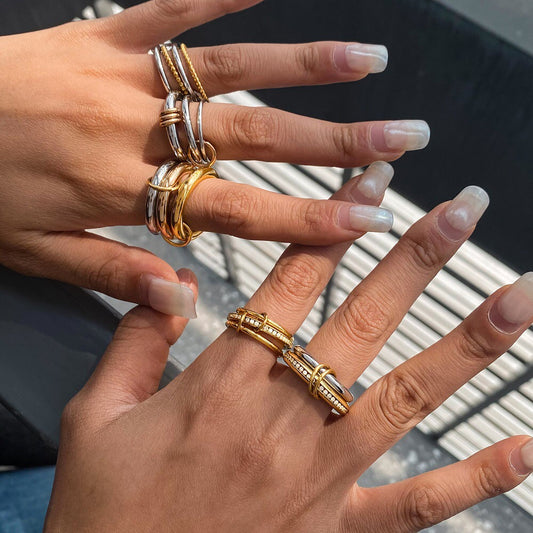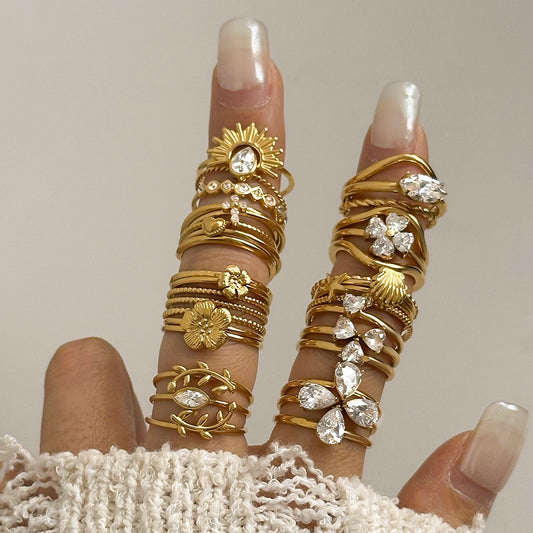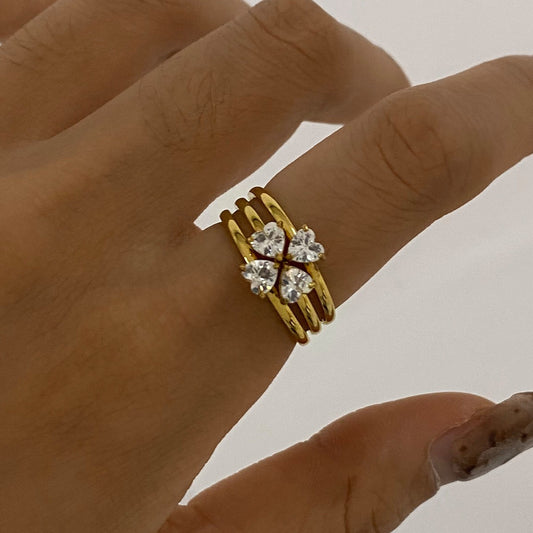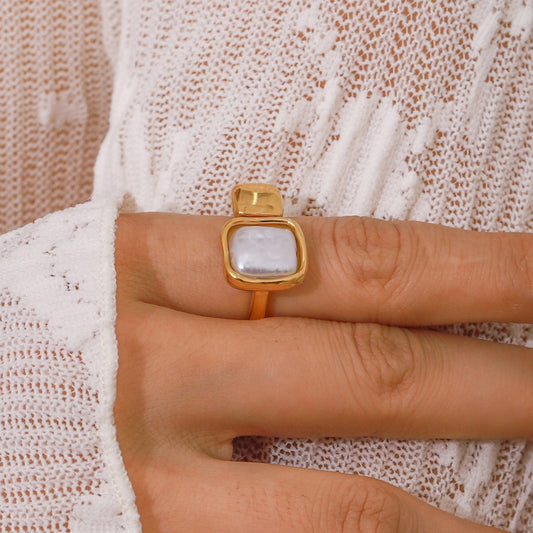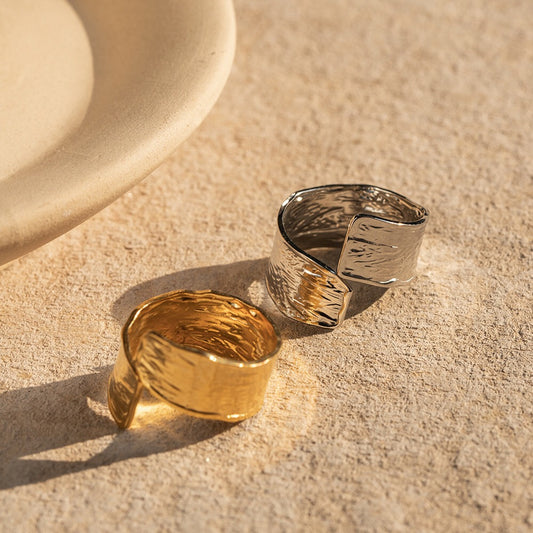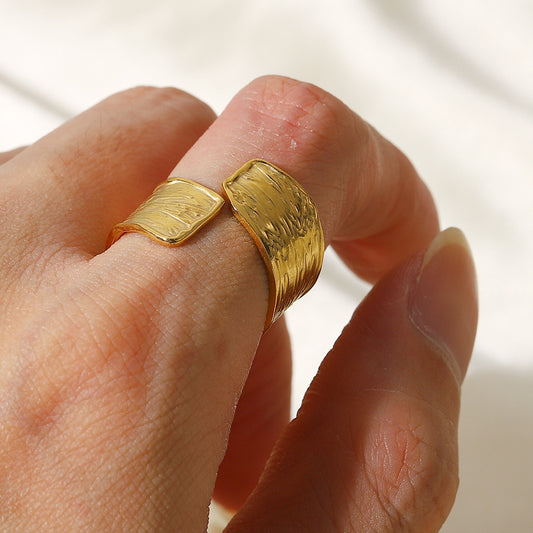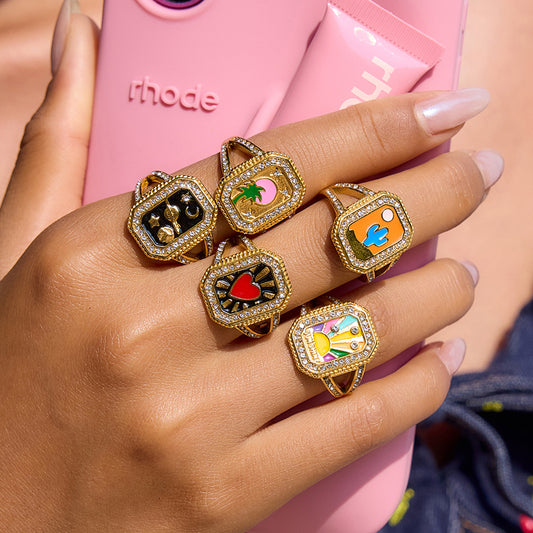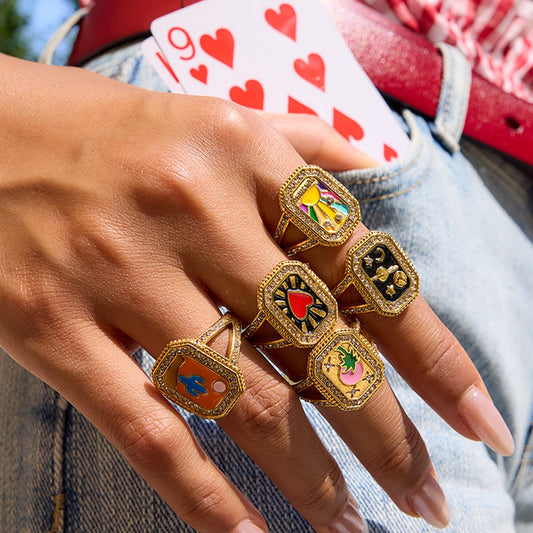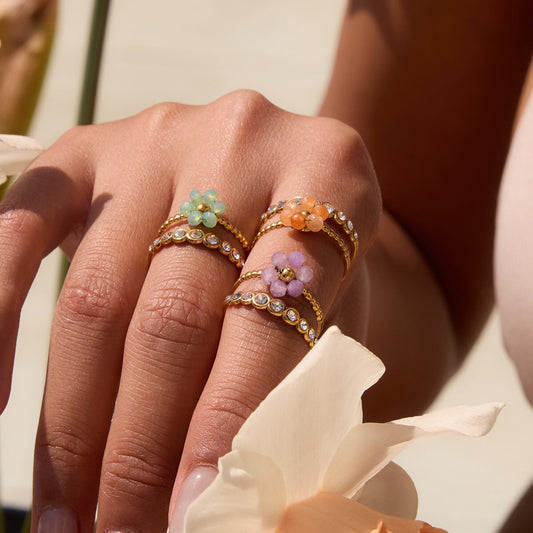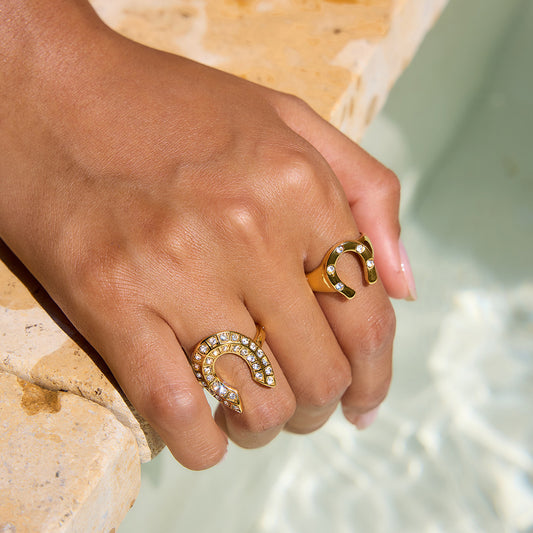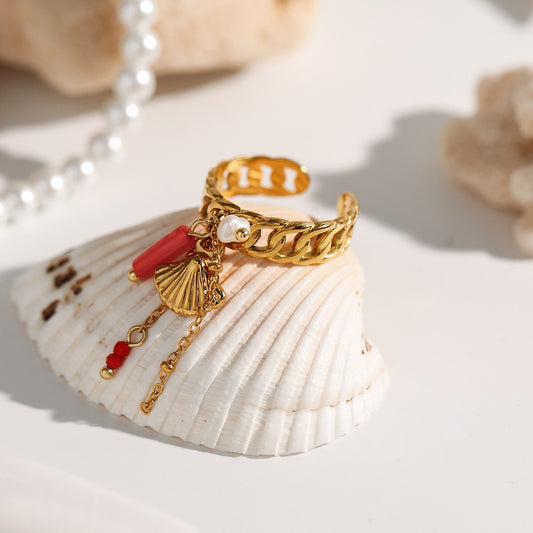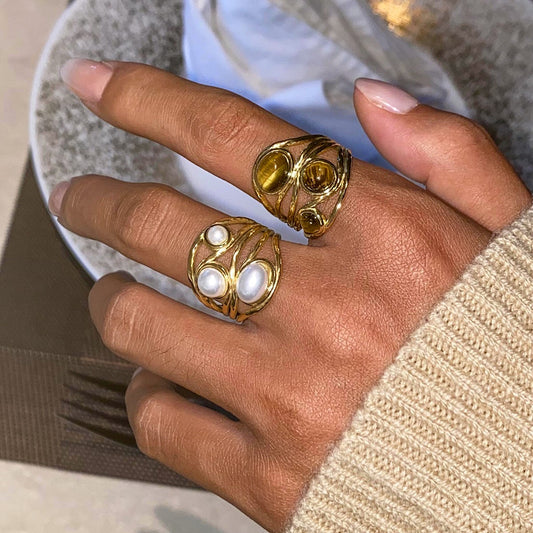Average Ring Size for Women is a question that plagues anyone shopping for a ring—whether it’s a proposal ring, an anniversary gift for your wife, or a birthday surprise. Getting the size wrong means awkward resizing, delayed gifting, or worse: a ring that doesn’t fit at all. The global jewelry market size is projected to grow from $242.79 billion in 2025 to $343.90 billion by 2032, at a CAGR of 5.10% during the forecast period. The good news? The Average Ring Size for Women is standardized across most regions, and measuring correctly is easier than you think. In the U.S., for example, the Average Ring Size for Women is between 6 and 7 (with size 6 being the most common), while in the UK, it’s between L and N. This article will break down exactly what the average size means, how to measure it accurately, why rings are such a beloved accessory, and everything else you need to ensure your next ring gift fits perfectly.

What is Average Ring Size for Women
Global Average Ring Size Standards
The Average Ring Size for Women varies slightly by region, but most use a numerical or alphabetical system to measure finger circumference. Here’s how the most common standards compare:
-
U.S. & Canada: Numerical system (sizes 4–13). The Average Ring Size for Women is 6–7, with size 6 fitting a finger circumference of 5.19 inches (132mm) and size 7 fitting 5.47 inches (139mm).
-
UK & Australia: Alphabetical system (sizes A–Z). The Average Ring Size for Women is L–N, with size L matching U.S. size 6 (132mm) and size N matching U.S. size 7 (139mm).
-
Europe: Numerical system (sizes 40–60), based on finger circumference in millimeters. The Average Ring Size for Women is 52–54, with 52mm = U.S. size 6 and 54mm = U.S. size 7.
-
Key Note: These are averages—finger size depends on factors like age (fingers may widen slightly with age), weight (weight gain/loss affects circumference), and even temperature (fingers swell in heat, shrink in cold).
Factors That Affect a Woman’s Ring Size
The Average Ring Size for Women is a starting point, but individual size can vary due to these common factors:
-
Finger Shape & Bone Structure: Some women have slender fingers with small knuckles, while others have wider knuckles or more rounded fingers. Knuckle size matters—if knuckles are larger than the base of the finger, you may need to size up to slide the ring over.
-
Weight Fluctuations: Gaining 10+ pounds can increase finger circumference by 1–2 sizes, while losing weight can decrease it. If buying a ring for someone with ongoing weight changes (e.g., pregnancy), opt for adjustable styles or wait until their weight stabilizes.
-
Temperature & Time of Day: Fingers are largest in the afternoon/evening (due to natural swelling) and smallest in the morning. They also swell in hot weather or after exercise. For the most accurate measurement, measure in the evening when fingers are at their “normal” size.
-
Dominant Hand: The dominant hand (e.g., right hand for right-handed people) is slightly larger—usually ½ a size bigger. If the ring is for the left ring finger (common for engagement/wedding rings), measure that specific finger, not the right.

How to Measure Average Ring Size for Women (Step-by-Step)
You don’t need a jeweler to measure—use these 3 easy methods at home:
-
String/Floss Method (Most Accessible):
-
Cut a piece of string or floss (6 inches long).
-
Wrap it around the base of the target finger (snug but not tight—you should be able to slide a finger under the string).
-
Mark the spot where the string overlaps with a pen.
-
Lay the string flat and measure the length from the end to the mark (in inches or millimeters).
-
Use a ring size chart (e.g., 5.19 inches = U.S. size 6, 5.47 inches = U.S. size 7) to find the size.
-
Existing Ring Method (If They Own a Ring):
-
Take a ring that fits the target finger (not too loose, not too tight).
-
Place it on a ruler and measure the inner diameter (from one inner edge to the opposite edge) in millimeters.
-
Use a chart: 16.5mm diameter = U.S. size 6, 17.3mm = U.S. size 7.
-
Plastic Ring Sizer (Most Accurate):
-
Buy a reusable plastic ring sizer (available on Amazon for \(5–\)10) with labeled sizes.
-
Slide the sizer onto the target finger, adjusting until it fits snugly.
-
The label on the sizer that lines up with the arrow is the correct size.

Why is ring so popular
Symbolism of Rings (Love, Commitment, Identity)
Rings have been popular for millennia because they carry deep emotional meaning:
-
Love & Commitment: Engagement and wedding rings symbolize lifelong devotion—their circular shape represents “forever” (no beginning, no end). According to the JRA 2024 report, 89% of married women wear their wedding ring daily as a reminder of their bond.
-
Milestones & Achievements: Graduation rings mark academic success, championship rings honor sports victories, and family heirloom rings pass down generational stories.
-
Personal Identity: Stackable rings, birthstone rings, or initial rings let people express their personality—e.g., a minimalist may wear a thin gold band, while a bold dresser may opt for a statement gemstone ring.
Versatility Across Occasions
Rings work for every moment in a woman’s life, making them a versatile accessory:
-
Everyday Casual: A simple silver or gold band pairs with jeans, tees, and sneakers—adds subtle style without effort.
-
Work/Professional: A dainty birthstone ring or thin stackable band complements blazers and slacks—polished enough for meetings, not distracting.
-
Special Events: A gemstone statement ring (e.g., diamond, sapphire) elevates gowns or cocktail dresses—adds glamour without overshadowing the outfit.
-
Sentimental Moments: A mother’s ring (with children’s birthstones) or a friendship ring is worn daily to honor loved ones.

Timeless Design That Never Fades
Unlike fast-fashion jewelry (e.g., neon bracelets, quirky earrings), rings lean into classic designs that stay relevant:
-
Classic Styles: Solitaire rings, plain metal bands, and birthstone rings have been popular for decades and won’t feel outdated in 5–10 years.
-
Adaptable Trends: Even trendy styles (e.g., stackable rings, minimalist bands) are rooted in timelessness—they can be mixed with older pieces for a cohesive look.
-
Durable Materials: Most popular rings are made of metals like gold, silver, or platinum—materials that last for years, making them long-term investments.
Accessibility for All Budgets
Rings are available at every price point, making them accessible to everyone:
-
Budget-Friendly: Sterling silver bands or cubic zirconia rings start at \(20–\)50—perfect for casual wear or first-time gifters.
-
Mid-Range: 14k gold rings or genuine gemstone rings (sapphires, rubies) cost \(150–\)500—ideal for anniversaries or milestone gifts.
-
Luxury: Diamond engagement rings or platinum bands range from \(1,000–\)10,000+—for special moments like proposals.
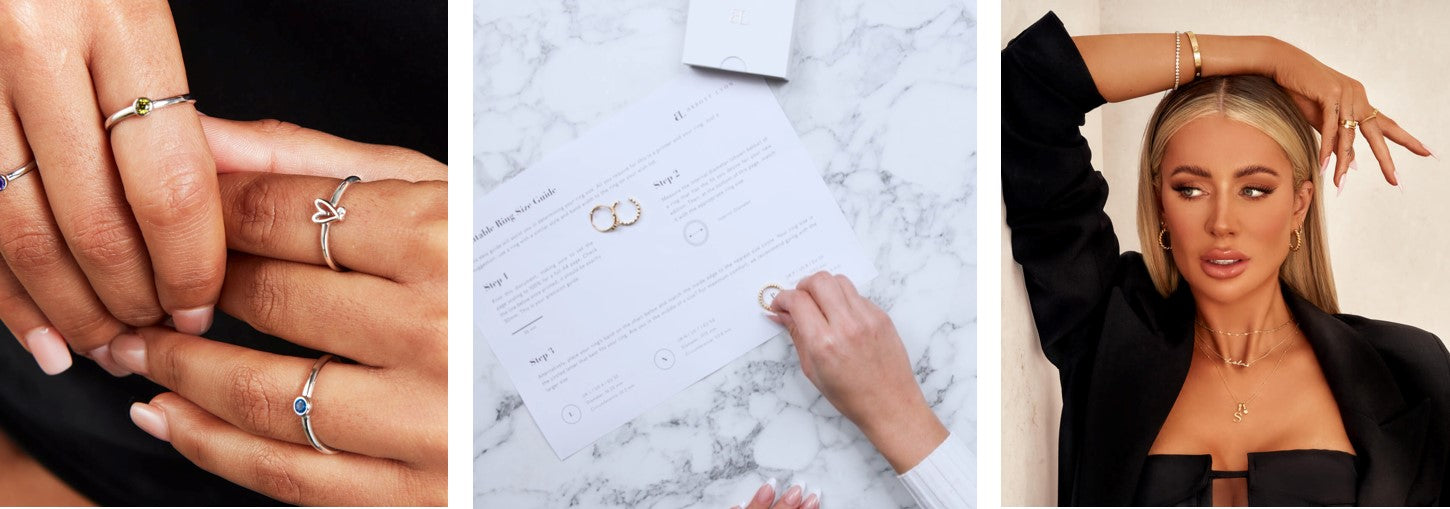
Popular styles of ring
Solitaire Ring (Timeless Elegance)
-
Design: A single gemstone (usually a diamond) set in a thin metal band (gold, silver, platinum). The gemstone is held in place by prongs (4–6 small metal claws) to maximize sparkle.
-
Why It’s Popular: The ultimate symbol of simplicity and luxury. It’s the most common engagement ring style—90% of engagement rings sold in 2023 were solitaire designs (JRA report).
-
Best For: Proposals, wedding rings, or anyone who loves minimalist glamour. Prices: \(500 (CZ)–\)10,000+ (real diamond).
Stackable Ring (Versatile Trend)
-
Design: Thin metal bands (1–2mm thick) that can be worn alone or stacked with 2–3 other rings. Styles include plain metal, engraved patterns, or tiny gemstone accents.
-
Why It’s Popular: Fully customizable—mix metals (gold + silver), add birthstones, or layer different textures. They’re lightweight and comfortable for daily wear.
-
Best For: Everyday wear, work, or anyone who loves flexible styling. Prices: \(30 (silver)–\)200 (gold).
Birthstone Ring (Personalized Charm)
-
Design: A ring featuring a gemstone corresponding to a birth month (e.g., January = garnet, June = pearl). The gemstone can be set alone or with small accent stones.
-
Why It’s Popular: Deeply personal—celebrates a birthday, child’s birth, or family bond (e.g., a ring with all children’s birthstones).
-
Best For: Birthdays, Mother’s Day, or sentimental gifts. Prices: \(50 (silver)–\)300 (gold).
Statement Ring (Bold Glamour)
-
Design: Large, eye-catching rings with oversized gemstones (e.g., 1+ carat), intricate metalwork (filigree, engravings), or vibrant enamel.
-
Why It’s Popular: Makes a dramatic statement without being bulky. Perfect for adding flair to simple outfits (e.g., a black dress + statement ring = instant party look).
-
Best For: Formal events, concerts, or anyone who loves bold style. Prices: \(80 (CZ)–\)800 (genuine gemstone).
How to wear ring
Pairing with Outfits (By Occasion)
-
Everyday Casual:
-
Outfit: High-waisted light blue jeans, a white cropped tee, and white sneakers.
-
Ring: 1–2 stackable silver rings (plain bands) on the index or middle finger. The subtle style adds polish without clashing.
-
Work/Professional:
-
Outfit: A navy blazer, a light blue button-down, and tailored black trousers.
-
Ring: A dainty birthstone ring (small gemstone) on the ring finger or a thin gold stackable band on the middle finger. Polished, not distracting.
-
Date Night:
-
Outfit: A black slip dress, strappy heels, and a small clutch.
-
Ring: A solitaire diamond ring (engagement ring) or a small statement ring (sapphire or ruby) on the ring finger. Adds romance and sparkle.
-
Formal Event (Wedding/Gala):
-
Outfit: A floor-length emerald green gown or a silver sequined dress.
-
Ring: A bold statement ring (oversized emerald or diamond) on the middle finger. The gemstone complements the gown’s color.
Styling for Different Finger Shapes
The right ring style flatters your finger shape—here’s how to choose:
-
Slender Fingers: Bold statement rings or wide bands work well—they add volume without overwhelming. Avoid tiny stackable rings, which can look lost.
-
Short Fingers: Thin bands or solitaire rings with vertical gemstone settings (e.g., oval or marquise diamonds) elongate the finger. Avoid wide bands, which make fingers look shorter.
-
Wide Fingers: Medium-width bands (2–3mm) or stackable rings (2–3 thin bands) balance width. Avoid oversized statement rings, which emphasize width.
-
Knobby Knuckles: Choose rings with a slightly larger size (½ size up) to slide over knuckles easily. Low-profile styles (e.g., bezel-set gemstones) don’t catch on knuckles.
Tips for Wearing Multiple Rings (Stacking)
Stacking rings is a trendy way to add depth—follow these rules to avoid clutter:
-
Mix Metals (Carefully): Stick to 2 metal tones max (e.g., gold + silver, rose gold + white gold). Too many metals look disjointed.
-
Vary Widths: Pair a thin band (1mm) with a medium band (2mm) and a slightly thicker band (3mm). This creates a balanced “staggered” look.
-
Limit to 3–4 Rings Per Hand: More than 4 rings look messy. Focus on 1–2 fingers (e.g., ring finger + middle finger) instead of spreading them across all fingers.
-
One Focal Point: Choose one ring as the star (e.g., a birthstone ring) and keep the others simple (plain bands). This prevents competition for attention.
Ring: perfect gift for your wife
Symbolizes Love and Appreciation
A ring is a perfect gift for your wife because it carries deep emotional weight—more than a sweater or a bag, it’s a tangible reminder of your love:
-
“Forever” Symbolism: The circular shape represents your lifelong commitment—every time she wears it, she’ll think of your wedding day, anniversaries, and shared memories.
-
Thoughtfulness: Choosing a ring shows you’ve put effort into the gift—you considered her style, her finger size, and what would make her feel special.
-
Daily Reminder: Unlike gifts that are used occasionally (e.g., a vacation), she’ll wear the ring daily—keeping your love close, even on busy days.
Fits Her Style (No Matter What She Loves)
With so many ring styles, you can find one that matches your wife’s aesthetic:
-
Minimalist Wife: A thin gold or silver band (stackable or plain). Simple, elegant, and fits her “less is more” vibe.
-
Sentimental Wife: A birthstone ring (her birthstone or the kids’ birthstones) or an engraved ring (with your anniversary date or a quote like “Forever yours”).
-
Glamorous Wife: A solitaire diamond ring (upgrade from her engagement ring) or a statement ring with a large gemstone (sapphire, ruby).
-
Casual Wife: A stackable silver ring set or a beaded ring (sterling silver beads). Comfortable for weekends and errands.
Durable for Her Busy Life
Wives are busy—cooking, caring for kids, working—and a well-made ring is tough enough to keep up:
-
Scratch Resistance: Metals like 14k gold, platinum, or sterling silver resist scratches from typing, opening doors, or carrying bags.
-
Secure Gemstones: Prong or bezel settings keep gemstones in place—no worrying about losing a diamond while doing laundry or gardening.
-
Low-Maintenance: Most rings only need occasional cleaning (wiping with a cloth) to stay shiny. No delicate care like pearl jewelry.
Celebrates Marriage Milestones
A ring is ideal for marking key moments in your marriage:
-
Anniversaries: 1st (paper—pair with a handwritten note), 10th (tin/ aluminum—upgrade to a 14k gold band), 25th (silver—sterling silver ring).
-
Birth of a Child: A birthstone ring with the baby’s birthstone—symbolizing your growing family.
-
Vow Renewal: A new wedding band or an engraved ring to reaffirm your commitment.
How to clean ring
Supplies Needed (Gentle and Effective)
Different ring materials need different care—use these mild supplies to avoid damage:
-
Mild Dish Soap: Unscented, dye-free (no bleach or ammonia) for all metal types.
-
Lukewarm Water: Not hot—hot water can loosen gemstone settings or damage enamel.
-
Soft-Bristled Toothbrush: Unused, extra-soft (hard bristles scratch metals or gemstones).
-
Lint-Free Cloth: Microfiber or cotton (paper towels leave scratches).
-
Metal-Specific Cleaners: Silver polish for sterling silver rings, gold polish for gold rings (avoid on gemstones).
Step-by-Step Cleaning Process
-
Basic Weekly Cleaning (3–5 Minutes):
-
Mix 1 drop of mild dish soap with 1 cup of lukewarm water in a small bowl. Stir to create suds.
-
Submerge the ring and soak for 5 minutes. This loosens skin oils, lotion, and dirt that dull shine.
-
For metal bands: Gently scrub the band and clasp with the toothbrush.
-
For gemstone rings: Scrub around the gemstone (not the stone itself) to remove trapped dirt. For prongs, use the toothbrush’s tip to clean between them.
-
Rinse thoroughly under lukewarm water. Hold the ring over a strainer to avoid dropping it down the drain.
-
Pat dry with a lint-free cloth—never rub vigorously (this can scratch metal or dislodge gemstones).
-
Deep Cleaning for Specific Materials:
-
Gold/Silver Rings: Use a metal-specific polish cloth. Rub gently in circular motions until shine returns. For tarnished silver, make a paste of 1 part baking soda + 2 parts water, apply to the band with a cloth, let sit for 2 minutes, then gently scrub and rinse. Avoid baking soda on gold-plated rings (it wears off plating).
-
Gemstone Rings:
-
Hard Gems (Diamonds, Sapphires): Use a non-abrasive jewelry cleaner (follow product instructions) to soak the ring for 10 minutes, then scrub gently.
-
Soft Gems (Pearls, Opals): Skip soaking—wipe with a damp cloth dipped in soapy water. These stones absorb moisture and can crack if submerged.
-
Enamel Rings: Avoid polish cloths (they scratch enamel). Wipe with a damp cloth and mild soap, then dry immediately to prevent water spots.
Maintenance Tips to Keep Rings Shiny
-
Store Properly: Keep rings in a soft jewelry pouch or lined box (separate from other jewelry) to avoid scratches. For gemstone rings, lay them flat to prevent prongs from bending; for stackable rings, separate them to avoid tangling.
-
Remove Before High-Risk Activities: Take off rings before swimming (chlorine erodes metal, damages gemstones), gardening (dirt scratches surfaces), cooking (oils build up), or applying beauty products (perfume, hairspray leave a film that dulls shine).
-
Avoid Chemical Exposure: Household cleaners (bleach, ammonia), hand sanitizer (high alcohol content), and nail polish remover can discolor metal or loosen gemstone settings. Wear gloves when cleaning, or remove rings first.
-
Check Settings Regularly: Every 2–3 weeks, inspect prongs or bezels for looseness. If a gemstone wiggles or a prong is bent, take it to a jeweler for repair (\(20–\)50)—small fixes prevent lost stones.
Frequently asked questions about Average Ring Size for Women
If I don’t know her ring size, can I guess based on the average?
You can use the average as a starting point, but it’s risky—here’s how to improve your guess:
-
Use Clues: If she has small hands (e.g., wears size XS gloves), guess U.S. size 5–6; if she has medium hands (size S/M gloves), guess 6–7; if she has large hands (size L/XL gloves), guess 7–8.
-
Borrow a Ring: Sneak a ring she wears on the target finger (e.g., left ring finger) and use the “existing ring method” to measure its diameter (then match to a size chart). Most jewelers will measure a borrowed ring for free.
-
Opt for Adjustable Rings: If guessing feels too risky, choose an adjustable ring (e.g., bands with a hidden hinge or open design) that can be resized 1–2 sizes. These are common for stackable or casual rings.
-
Post-Purchase Resizing: Many jewelers offer free resizing within 30 days of purchase—check the policy before buying. This lets you gift the ring, then adjust it if needed.
Can a ring be resized if it’s too big or too small?
Yes—most rings can be resized, but it depends on the style:
-
Resizable Rings: Plain metal bands (gold, silver), stackable rings, and bands with simple engravings can be resized 1–2 sizes up or down. Jewelers cut the band, add/remove metal, then solder it back together (costs \(20–\)50).
-
Hard-to-Resize Rings: Rings with gemstones all around (e.g., full eternity rings), intricate engravings, or tension settings (no prongs) are hard to resize—resizing may damage the design. Jewelers may advise against it, or charge $100+ for complex adjustments.
-
Non-Resizable Rings: Some materials (e.g., tungsten, ceramic) can’t be resized at all—they’re too hard to cut. Avoid these if you’re unsure of her size.
Does finger size change with age or pregnancy?
Yes—here’s what to expect:
-
Age: Fingers may widen slightly with age (due to natural changes in tissue and bone density) but rarely more than ½ a size. If buying a ring for an older woman, size up ½ if she hasn’t been measured in 10+ years.
-
Pregnancy: Hormonal changes cause fluid retention, making fingers swell 1–2 sizes. Avoid buying a permanent ring during pregnancy—wait until 6–8 weeks after giving birth (when swelling subsides) to measure. For a pregnancy gift, choose a temporary adjustable ring.
-
Weight Changes: Gaining 20+ pounds can increase finger size by 1 size; losing weight can decrease it. If she’s on a weight loss/gain journey, wait until her weight stabilizes to buy a non-adjustable ring.
What if her knuckles are bigger than the base of her finger?
Knuckle size is a common issue—here’s how to handle it:
-
Measure Both Base and Knuckle: Wrap string around the base of the finger and the knuckle. If the knuckle measurement is ¼–½ size larger than the base, size up to the knuckle size. This ensures the ring slides over the knuckle easily (it may feel slightly loose at the base, but a jeweler can add a “ring guard” to tighten it).
-
Choose Low-Profile Styles: Rings with rounded edges (e.g., bezel-set gemstones) slide over knuckles better than sharp-edged styles (e.g., square bands).
-
Avoid Tight Rings: A ring that’s too tight over the knuckle can cause discomfort or cut off circulation. It’s better to have a slightly loose ring at the base than a tight one that won’t slide on.
Is the average ring size the same for engagement rings and casual rings?
Yes—the average size (U.S. 6–7) applies to all ring types, but the fit may feel different:
-
Engagement/Wedding Rings: These are worn daily, so a snug fit is best (you should be able to slide a finger under the band, but it won’t spin easily). If she’s between sizes (e.g., 6.5), size down to 6 for a secure fit.
-
Casual Rings (Stackable, Statement): These are often removed more frequently, so a slightly looser fit is okay. If she’s between sizes, size up to 7 for comfort.
-
Key Tip: Always measure for the specific finger—engagement rings go on the left ring finger, which is usually ½ size smaller than the right ring finger.
Conclusion: Average Ring Size for Women – How to Measure Right
Knowing the Average Ring Size for Women (U.S. 6–7, UK L–N) is a great starting point, but accurate measurement is the key to a perfect fit. Whether you’re gifting an engagement ring, an anniversary band for your wife, or a casual stackable ring, taking the time to measure (with string, a borrowed ring, or a plastic sizer) avoids the hassle of resizing and ensures she’ll love wearing it daily.
Rings are more than just jewelry—they’re symbols of love, commitment, and memories. A well-fitted ring feels like an extension of her style, whether she prefers minimalist bands, sentimental birthstone designs, or bold statement pieces. And with simple care—gentle cleaning, proper storage, and avoiding harsh chemicals—her ring will stay shiny and meaningful for years.
Ready to find the perfect ring that fits her perfectly? Explore our curated collection today, featuring:
-
Engagement Rings: Solitaire diamond rings in U.S. sizes 4–13, with free resizing within 30 days (\(500–\)10,000+).
-
Anniversary Bands: 14k gold or sterling silver stackable rings, personalized with engravings or birthstones (\(150–\)500).
-
Casual Rings: Adjustable stackable bands and beaded rings, ideal for everyday wear (\(30–\)100).
All orders include a free plastic ring sizer (so you can double-check her size), free shipping on purchases over $50, and a 30-day return policy. For a limited time, get a free jewelry cleaning kit with every ring purchase—keep her new ring shiny for years.
Don’t let guesswork ruin your gift. Shop our collection now, use our size guide to measure accurately, and give her a ring that fits perfectly—just like your love.






